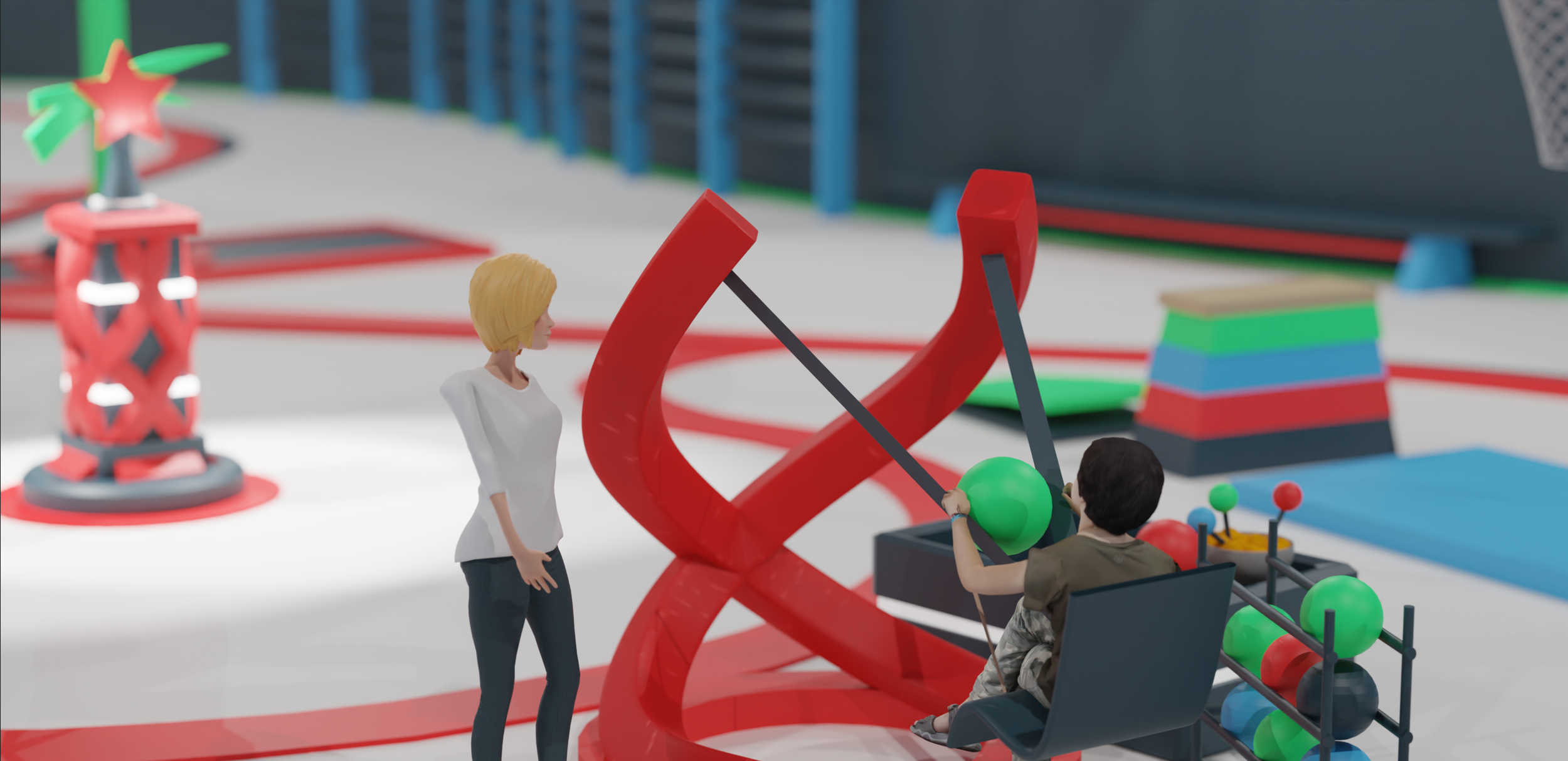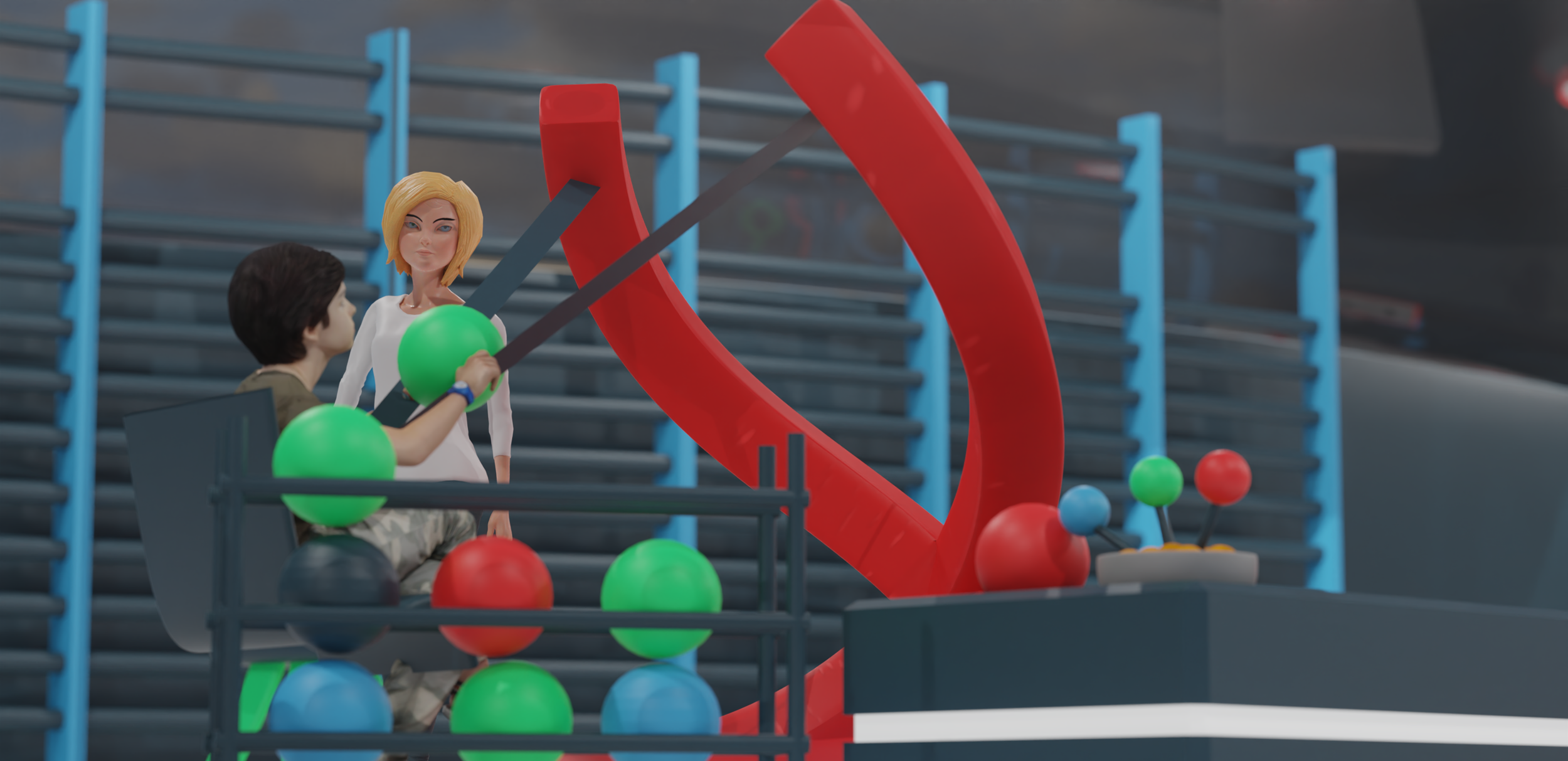
Addattachment (adda)
Simulated Game for Attachment Study
VR Game Design and Implementation rules
Visualizing Environmental Concepts
Character Design Concept Art
The "Learning Theory of Attachment" argues that attachment development unfolds at least in part as a result of learning processes in which the child learns that the caring figure is a safety signal that protects against stress.
Every care interaction between a child and a care figure can be seen as a learning moment. If the contingency, ie the co-occurrence of the care figure and the provision of support in stressful situations, is high, the degree of trust the child has in the care figure will increase. A low contingency of the care figure and the provision of support will decrease the child's confidence in the care figure.
This Virtual Reality study is based on the cyberball paradigm where children play a game with other children through a simulation where they will experience exclusion/competition.
Collaboration
KU Leuven Clinical Psychology:
Guy Bosmans
Marlies Wintmolders
Samuël Budniok
LUCA school of Arts:
Wim Forceville
Wouter Devriese
Fons Artois
Glenn De Cock
Hannah Goossens
Indy Sarlet
Joenes Aelbracht
Katja Vajserman
Kenan Van Looveren
Lena De Kraey
Leni Van Praet
Luna De Cock
Marcel Van Ranst
Game Flow
Game Goal
We want to induce competitive stress for a child and monitor his/her response towards a caregiver.
A Child Enters in Physical Space
The child takes place on a chair. Firstly the emotibit stress measurement device gets attached to him.
Next we place the OpenBCI EEG headset on the head. We test (EEG#testing) if all electrodes have been placed correctly.
Then we place the VR headset on the head of the child and the game can start. (The VR glass has been adapted to be able to hang from above the child)
The Child Enters the VR Space
The child enters the environment.
First a tutorial is given to the game environment and mechanics.
A trial is run a couple of times in a row, forming a trialblock
During a trial, we measure different metrics
shooting_system: In a trial, a child is seated in which he can shoot a ball with a giant slingshot towards three pipes.
targets: These pipes try to suck the ball towards them.
reward_system: When we shoot the ball in the correct hole, we get some points.
Alternating with us, another NPC_player shoots as well, and we see how (s)he performs.
After 5 shots for both players, the trial is finished, and the results are shown on the score_board.
The caregiver gives feedback.
After this, you can caregiver#score the caregiver.
A trial#count-down timer indicates that a new trial will start, or, if we are at the end, a closing screen will be shown.
Software / Hardware
Hardware:
Pico Eye Pro (Eye Tracking)
EEG Headset (Emotibit) (Brainwave Data Capture)
Software:
Unity (Game Development Engine)
Python (Scripting Language for Hardware Interface)
Brainflow API (Integration of Brainwave Data Capture and Analysis)
Blender (3D Modeling and Animation)
Integration and Utilization:
Unity served as the core game development engine.
Python scripts were used to interface with hardware devices and capture data.
The Brainflow API facilitated seamless integration of brainwave data capture and analysis.
Blender was utilized for creating visually appealing 3D models and animations.
Pico Eye Pro provided eye tracking capabilities for enhanced interactivity.
The EEG headset (Emotibit) captured brainwave data for analysis and personalized interactions.
By leveraging these hardware and software components, we achieved an immersive and interactive experience, incorporating eye tracking and brainwave data analysis to enhance user engagement within our virtual environment..
Visual Style
The game will feature a delightful and charming visual style inspired by the iconic Fortnite aesthetic. The artwork will strike a balance between providing enough detail to create a sense of familiarity and incorporating abstract elements to maintain a whimsical and generic appeal.
By adopting this cartoonesque vibe, the game world will feel less realistic, enabling children to readily understand that they are immersed in a virtual environment. The non-player characters (NPCs) will be designed to resemble their real-life friends, enhancing the personal connection and making the gaming experience even more engaging.
Furthermore, this artistic approach will greatly facilitate the visualization of results through the reward system. The distinct visual style will make it easier for children to interpret and comprehend their progress, achievements, and rewards within the game world.
Overall, the game's visuals will capture the essence of the Fortnite style, combining a balance of detail and abstraction to create an immersive and child-friendly gaming experience.












